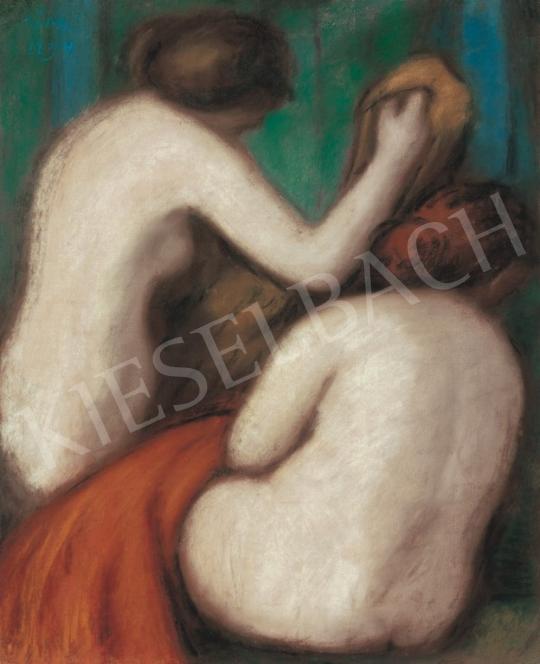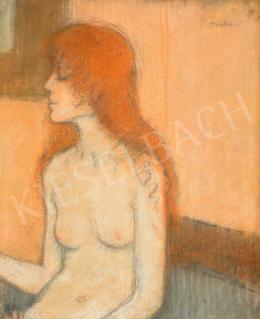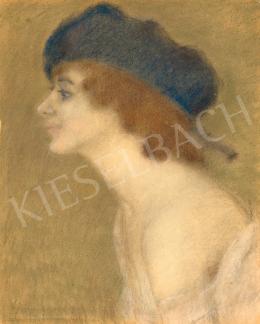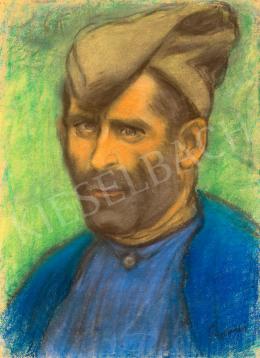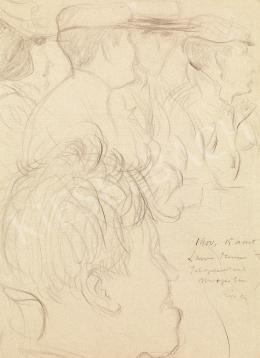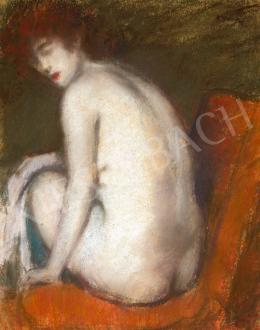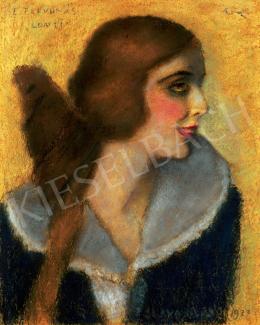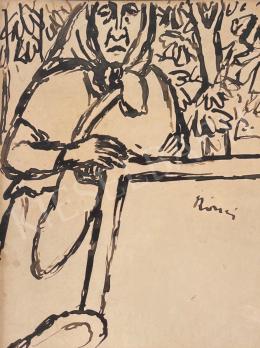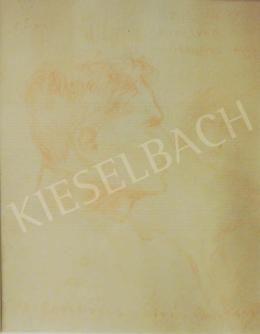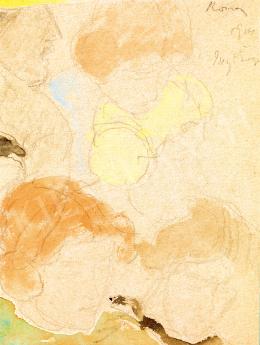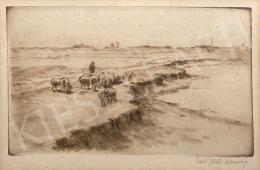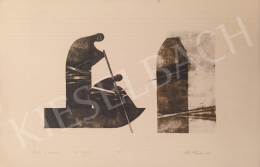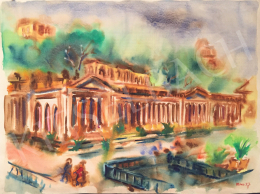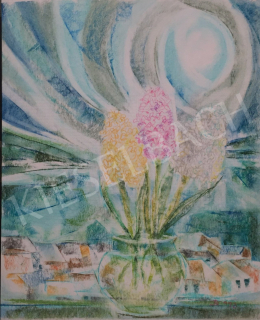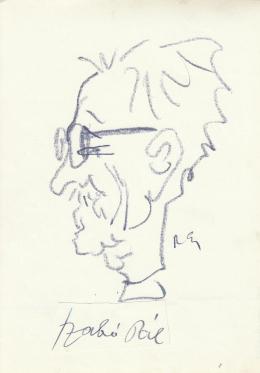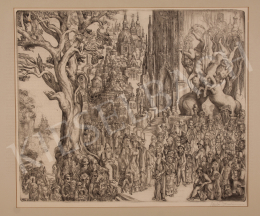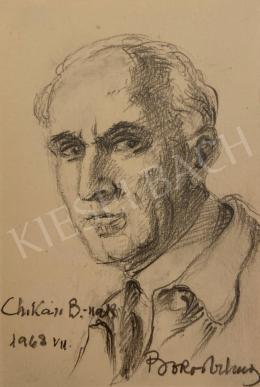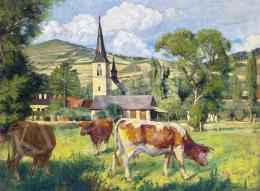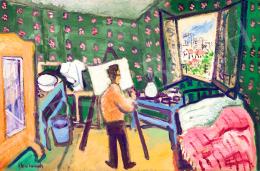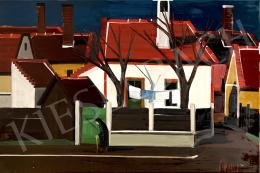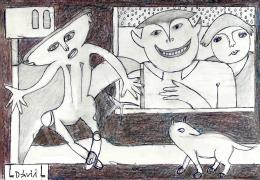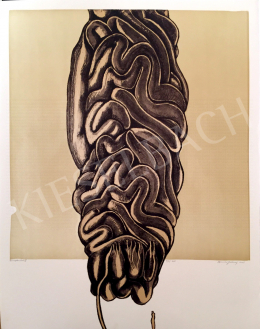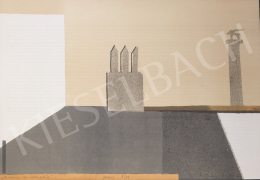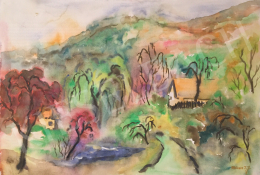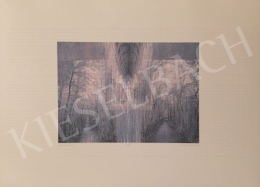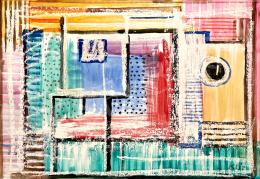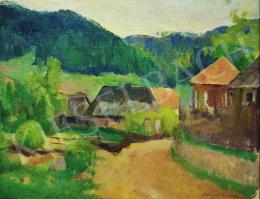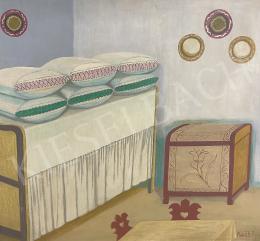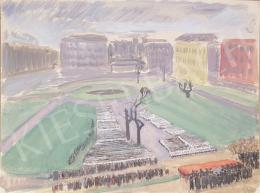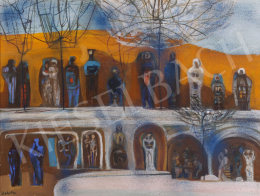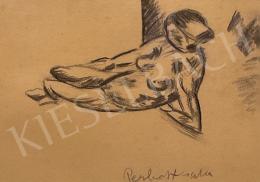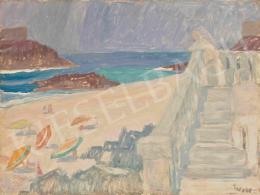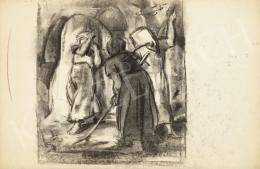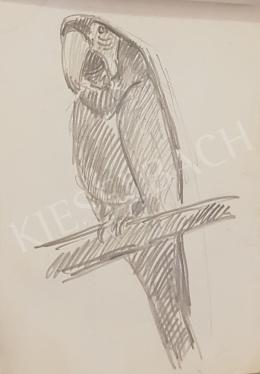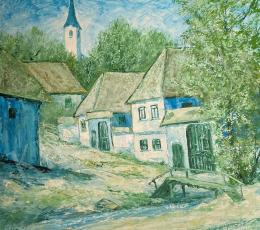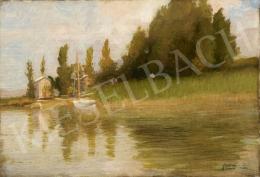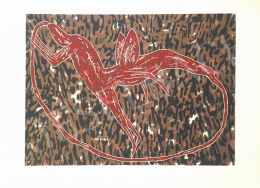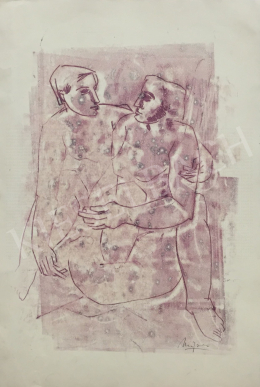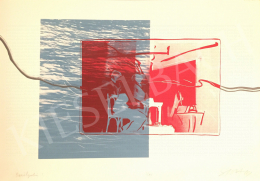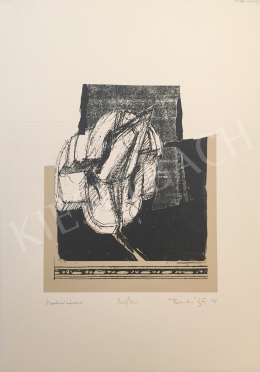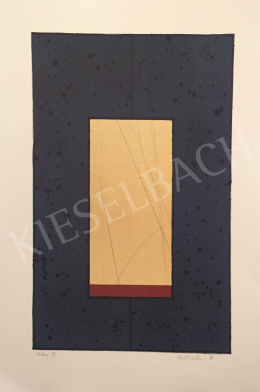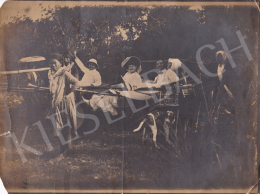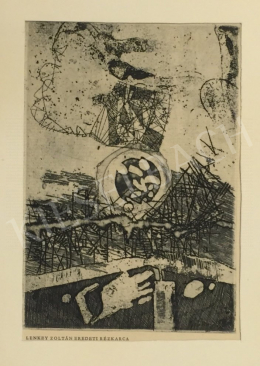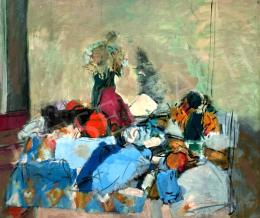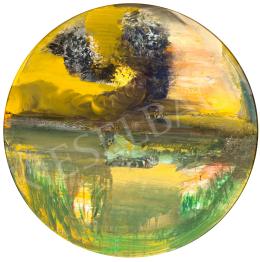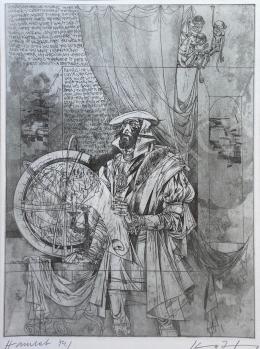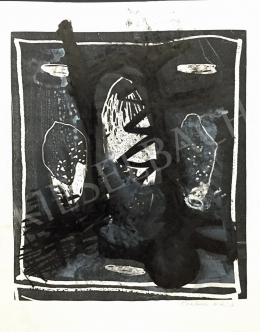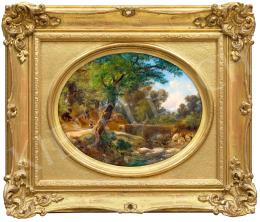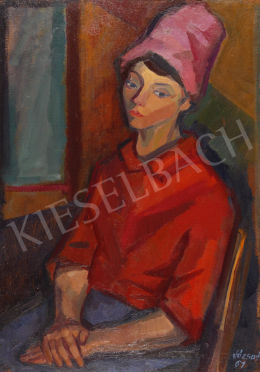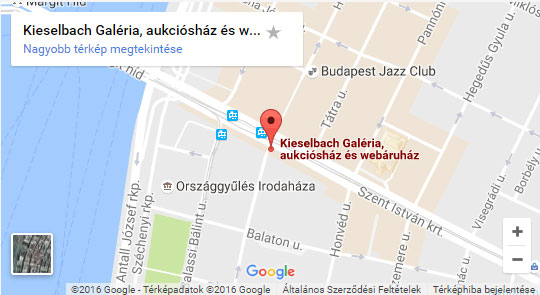Exhibited:
(The data listed here refer to the pastel "After bath". The identification of this pastel with the present picture is detailed in the last paragraph of the study)
- Budapest, Royal Hotel: The Impressions of József Rippl Rónai 1890-1900 (203 works of art)
- The exhibition hall of the Könyves Kálmán Magyar Műkiadó Részvénytársaság: The exhibition of Rippl-Rónai.1906, February
- The exhibition hall of the Könyves Kálmán Magyar Műkiadó Részvénytársaság: The auction of Rippl-Rónai's works. (381 pictures) 1906, March - Lot. No. 103., After bath, pastel
Literature:
- Bernáth Mária: Rippl-Rónai József. Budapest, 1998.
- Gudenus János - Szentirmay László: Összetört címerek. A magyar arisztokrácia sorsa és az 1945 utáni megpróbáltatásaik.Budapest, 1989. 87.o. (Broken coat of arms. The fate of the Hungarian aristocracy and their sufferings after 1945.)
- The memoirs of József Rippl-Rónai. Budapest, 1911
- The collected works of József Rippl-Rónai. Hungarian National Gallery, 1998. Catalogue edited by Bernáth Mária, Nagy Ildikó. Budapest, 1998. (See "MNG catalogue" in this study)
If we research the creation and the motifs of the pastel, we will find really exciting factors. It was painted in Paris, it has rich colorit, and mysterious atmosphere. In the background of it there is a very personal story which puts the most interesting characteristics of the work of art into a new light. Apart from the biographical details, it tells a lot about the relationship between Rippl's painting and his photography. Additionally, it is a bright example of the pictorial problems Rippl was engaged with in Paris, in the last decade of the 19th century.
We cannot see the faces of the double female nudes; the surface of the picture is filled with the colourful draperies, and the soft spots of the bodies.
The sitting nude - Lazarine
The model of the sitting woman is undoubtedly Lazarine Baudrion. It is proved by the photo that remained from the photographic experiments of Rippl-Rónai. In this photo, Lazarine can be seen in the same bearing as in this pastel. The artist met the young girl from a Burgundian village, in Paris, in 1888. She worked as a model, but their relationship soon became closer. Lazarine's calm, but strong personality became the sign of safety in the painter's whole life, and later they became colleagues, when working on Rippl's textile plans. As a model, she was always shown in shy, modest bearings. We can usually see only her naked back, with draperies around her body. Rippl must have taken this photo in order to use it later on his compositions. The method of using painting after self-made photos was popular among the experimenting artists of the end of the century, and has just got into the centre of art historic research. A good example is the exhibition of Edgar Degas photos in Metropolitan Museum of Art, in New York, in 1998.
In the MNG catalogue there is an important study by Csilla Csorba which is about the relationship between the photography and the painting in Rippl-Rónai's oeuvre.
This pastel painting that has just appeared from a private collection, can undoubtedly be related to one of the few photos that have remained - this is an extremely important event for the art historic research. Rippl must have been attracted to this posture, that is why he took photos of it, and that is why he used it on other compositions as well. One of the similar composition is the early, brown-toned "Back-nude" from 1891, and the naked figure of the "Woman, combing", from 1909. However, while both of the above mentioned paintings contain deviations from the original photo, our pastel in question shows Lazarine in exactly the same way as the photo. Thus it proved to be the second painting by Rippl, that turned out to be painted after the photo (the previous one is "My grandmother" from 1894)
The standing model
James Pitcairn-Knowles: The bath, 1896.
The other direct motivic parallel can be discovered on James Pitcairn-Knowles' coloured woodcut; "The bath, 1896". It was a gift for Rippl-Rónai from Knowles. Today it is in the possession of the Rippl-Rónai Museum in Kaposvár. In the 1890s they became passionate friends. Friends as men, and friends as artists. Knowles was the son of a Scottish factory-owner. He was well-to-do, he painted, and made woodcuts mainly. He was not an outstanding painter, but was a zealous connoisseur. He knew the artistic life of Paris well. He drew Rippl's attention to the art of James Abbot MacNeill Whistler, and introduced Rippl to Auguste Maillol. The two friends, Knowles and Rippl went to exhibitions together, and discussed the questions of painting continuously. Knowles' opinion was important for Rippl-Rónai. From 1892 on they rented a flat together, in one of the outer districts of Paris, in Neuilly. The two wives, Lazarine and the mysterious Yvonne were friends, too.
The bearing of the female figure on Knowles woodcut is exactly identical with the bearing of the standing nude in Rippl's pastel. The strict lateral view, the strange shoulder and back, the lifted hand on the drapery, the turned head are all characteristics of both of the models. Both Rippl and Knowles were experimenting with the same artistic problem. They tried the ways of reducing a complicated spatial, three-dimensioned form into a decorative, two-dimensioned spot.
We can presume, that the model of the standing woman besides Lazarine, might be Knowls spouse; Yvonne. It is possible, that Rippl used Knowles' bearing, but it is also possible, that both of them have seen this movement together, and they created their own work of art of the same motif. So, undoubtedly enough, the pastel painting presented here, have a really strong personal, and emotional background.
Identification, provenance.
This pastel painting can most probably be identified with the pastel that greatly contributed to Rippl's first success in Budapest. In 1906 he exhibited 318 pictures in the exhibition halls of the Könyves Kálmán House. After the view there was an auction, where lot No. 103. was a pastel with the title "After bath". It was sold, and its sale bill has remained. According to it, Baron Schossberger bought it (address: Lipót krt. 6., Budapest) for 105 crowns. As it is quite a high price for a pastel, it must have been a greater-sized picture, so it underlies the correctness of the identification. Also, it is possible, that he could not afford a model at that time, so he had to work with Lazarine as a model. On the reverse of the picture, there is an inscription "Puskás Aladár". We could not find any data about this name, but supposedly it must have the name of a later owner.
Spatial solutions, artistic attitude
We have already observed the spatial solutions of the composition, but there is one important question remaining. How did the two motifs get together in one picture? If we observe the two female figures thoroughly, it turns out, that it is not just the depiction of the natural movements of two women during bath, but rather a montage. Lazarine and Yvonne have never sat besides each other this way, the painter just used two motifs together, so as to compose a new unity out of well-known motifs. It is a proof of the important role of the imagination and the creative memory in Rippl's art. The painter was experimenting here, using a motif out of the ones that were nice to him.
It is interesting, that this painting was made in the same year when the most outstanding pieces of the so-called "black period" of the oeuvre. However, it is even more interesting, that all the three prominent paintings have something in common with our picture. As we have mentioned, the painting "My grandmother" was also painted after photo. The "Cemetery on the Great Plain" is a nice example of reducing spatial forms into decorative spots, and the bearing of the model of the "Slim woman with a vase" is the same as the bearing of the standing nude of the "After bath".
If we want to find analogous pieces outside the oeuvre, Edgar Degas, the great French master occurs immediately. He exhibited a series of 10 nude-compositions in Paris, in 1886. The title was "Nude-series", and it depicted women, bathing, combing, towelling. These paintings are characterised by exceptional colour harmonies on one hand, and on the other hand something extra which was defined by a contemporary writer, George Moore: "All the nudes that have been depicted so far have supposed an audience. Degas' nudes are sincere and simple women, who only pay attention to their own physical presence ... they are just as seen through a keyhole."
This attitude is mirrored in the fact that we usually cannot see the faces of the models. Their personality is hidden behind their emphatic physical presence. Although Rippl did not mention Degas in connection with this picture, we van assume that during his years in Paris, Degas' pastels must have had a motivating influence on his art.
Mária Csernitzky has entered this painting into the Rippl oeuvre catalogue.
Andorka, Júlia






